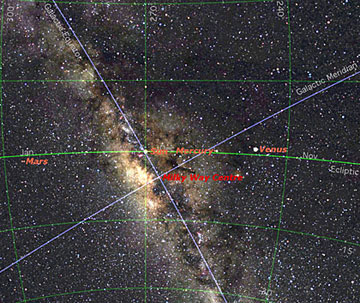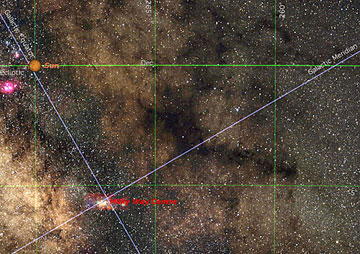
If you don't spend much time browsing obscure Web sites or watching cable TV, you might be unaware that the end of the world is supposed to be happening on December 21, 2012. I wasn't aware of this myself until I started hanging out on Yahoo! Answers, a Web site where people can post questions and other people can answer them. Much to my surprise, I discovered that the year 2012 features in no fewer than 8,429 questions posed in the last year or so!
Prophets have been predicting Doomsday for millennia. In fact, there is a Web site listing over 200 specific dates on which the world was predicted to end. Every single one of these Doomsdays has come and passed, yet the world and its inhabitants have survived unscathed every time. It thus becomes very difficult for anyone familiar with history to take these predictions seriously.
The evidence for this latest Doomsday supposedly comes from many different sources, and is thus supposed to be convincing. Yet each of these separate indicators, when examined closely, falls apart. Here, I'll use Starry NightŪ and a little astronomical knowledge to demolish one line of evidence.
One of the things which is supposed to happen on December 21, 2012 is that the Earth and Sun are supposed to line up with the Milky Way's equator. So the first question should be, "What is the galactic equator?" Unlike a planet, a galaxy is not a nice neat spheroid, but is an irregular lumpy mass of stars, gas, and dust. It's somewhat symmetrical, but trying to draw an equator on it would be like nailing jelly to a tree. What astronomers have done is to create an arbitrary line roughly across the centre of our galaxy, and have defined that as the galactic equator. This work was started by Harlow Shapley about 90 years ago and, while it's been refined somewhat over the years, it still is a very arbitrary line. It was officially defined by the International Astronomical Union in 1959, but it is there by definition, not based on any physical characteristics or markers.
So let's go to Starry NightŪ, where the galactic equator is located based on the IAU definition.
- In the Options pane, open Guides and then Galactic Guides, and turn on Equator and Meridian.
- Now open Ecliptic Guides and turn on Equator, Grid, and Meridian.
- Change the Date and Time to December 21, 2012 11:11 UT (convert to your local time, for example Eastern Standard Time would be 06:11 a.m.)
- Change Viewing Location to Centre of the Earth and the Orientation (under the Options menu) to Ecliptic.
- Set the Zoom to 90°, and your window should look like this:

As expected for the solstice, the Sun is right on the intersection of the green ecliptic equator and 270° grid line. It also looks pretty much as if the Sun is also sitting on the blue galactic equator, though remember that that?s just an arbitrary line drawn on the sky. Let's zoom in closer, to 15°:

Now you can see that things aren't fitting quite so nicely. The Sun's still on the ecliptic grid, but it's slipped off the galactic equator.
Even if it's on the galactic equator, remember that this is an arbitrary line. If you measure it, you'll find that the Sun is over 6° away from the real centre of the Milky Way. Unlike the galactic equator, this is a real reference point in the sky, the Sagittarius A radio source and the place where the Chandra X-ray telescope has imaged the center of the Milky Way, 26,000 light years away.
Even if this "alignment" didn't have a 6° kink in the middle of it, there's the further question as to what might be the significance of having both the Sun, which the Earth orbits, and our galaxy's black hole, which the Sun itself orbits, line up. The answer is: not very much. Gravitational effects are primarily determined by distance. This means that our Moon, though a tiny body, is the primary cause of the ocean tides. The Sun, while far larger, is so much farther away that its effect of the tides is very small. While our galaxy's black hole is hugely massive, it's so much farther away from us than the Sun that its effect on the Earth is totally negligible.
I've looked at a number of the other pieces of evidence for December 21, 2012 being a significant date, both astronomical and archaeological and, when closely examined, like the "galactic alignment," they vanish into thin air.
All of this predicting Doomsday might be considered harmless, were it not for the events surrounding Comet Hale-Bopp in 1997. Then, the predictions of immanent disaster led to the death by suicide of 39 members of the Heaven's Gate cult. I am deeply concerned that the promoters of this 2012 Doomsday "event" might precipitate another such deadly massacre. On December 22, 2012, the world will still be here, as it has survived the 200 plus previous "Doomsdays," but I fear that another Heaven's Gate may have occurred.
June 2008
Geoff has been a life-long telescope addict, and is active in many areas of visual observation; he is a moderator of the Yahoo "Talking Telescopes" group.















